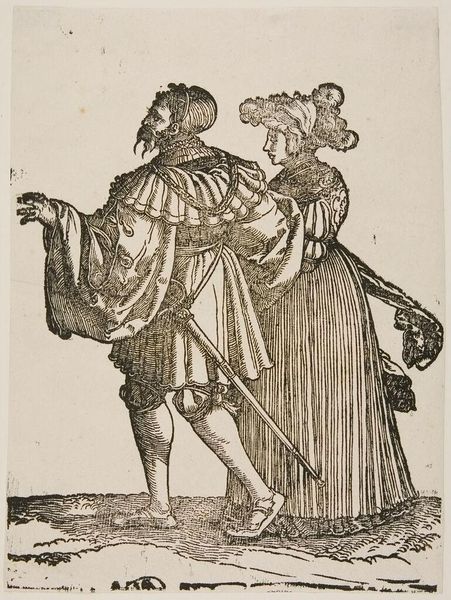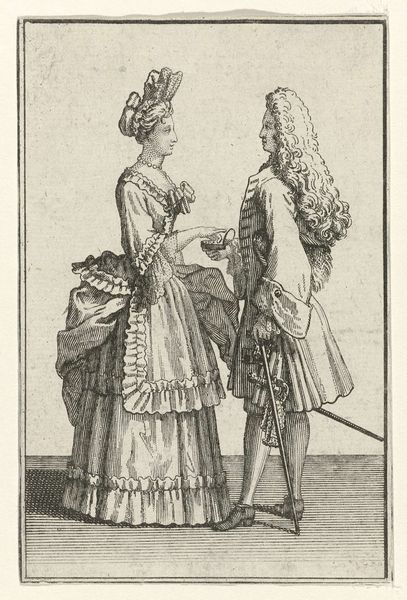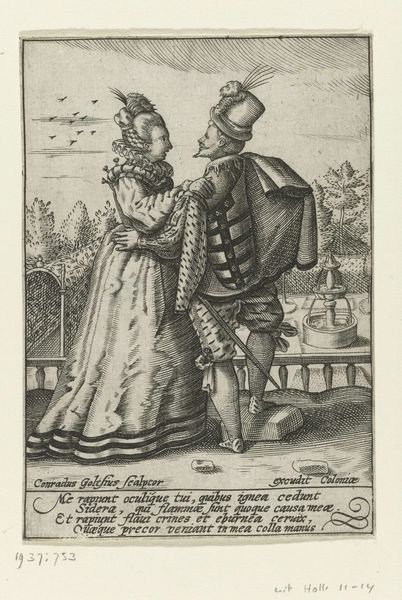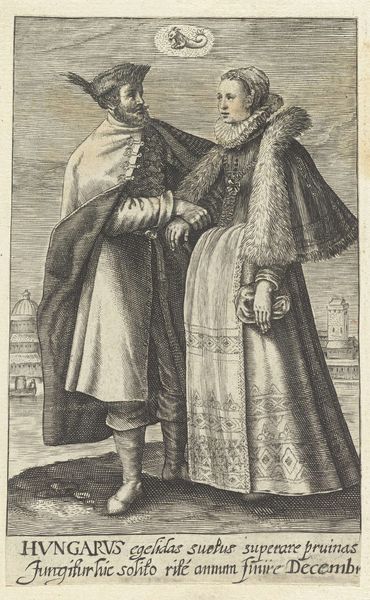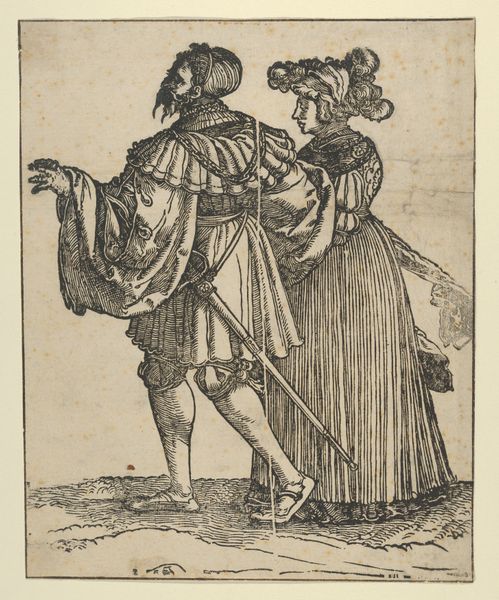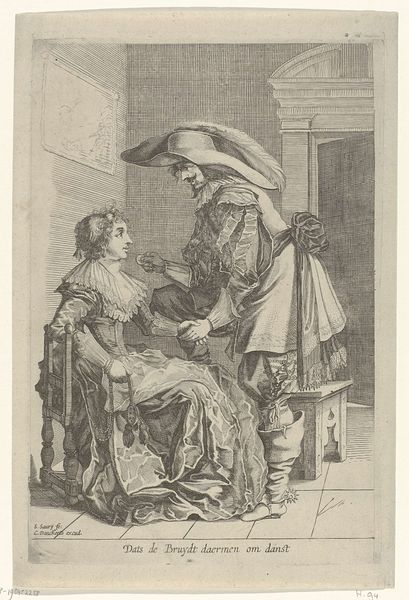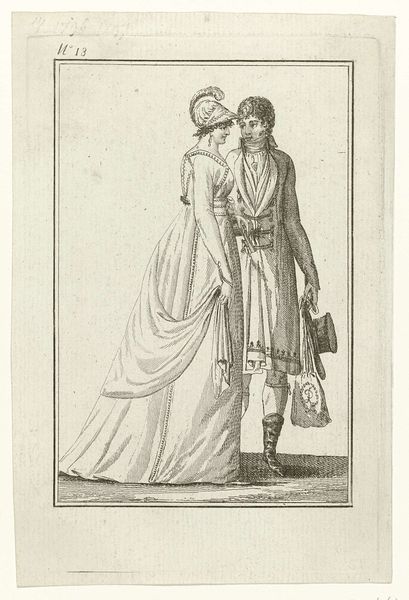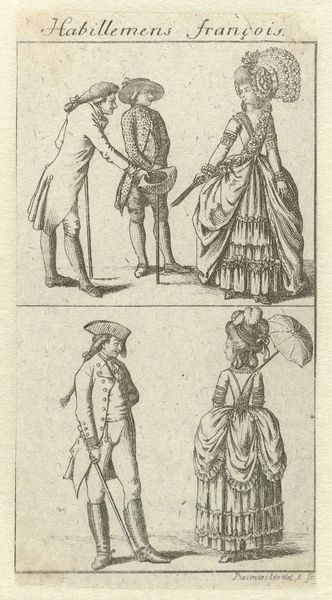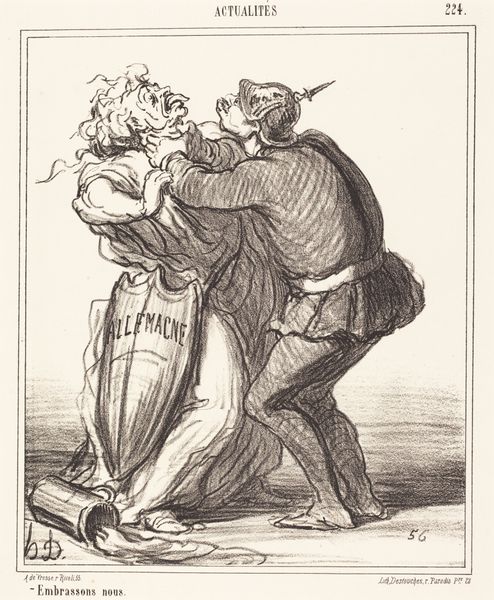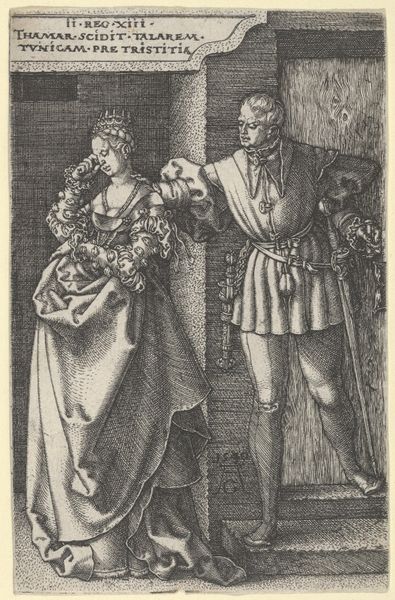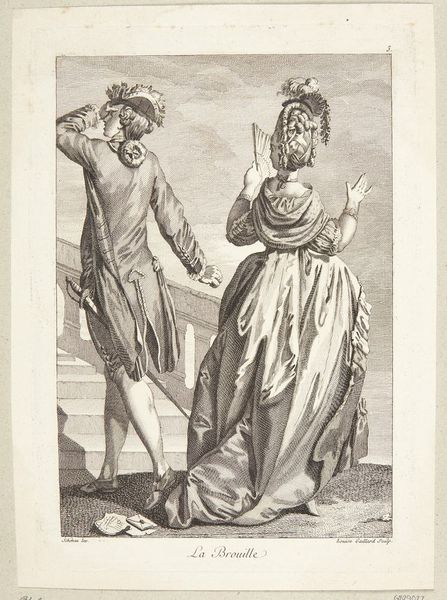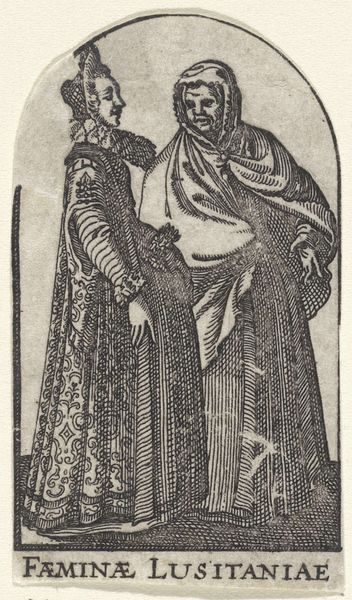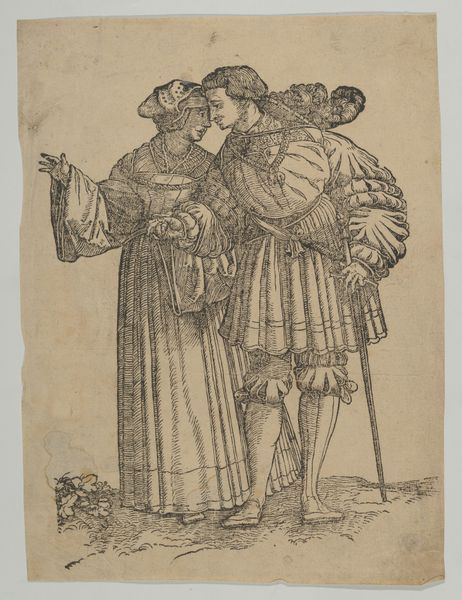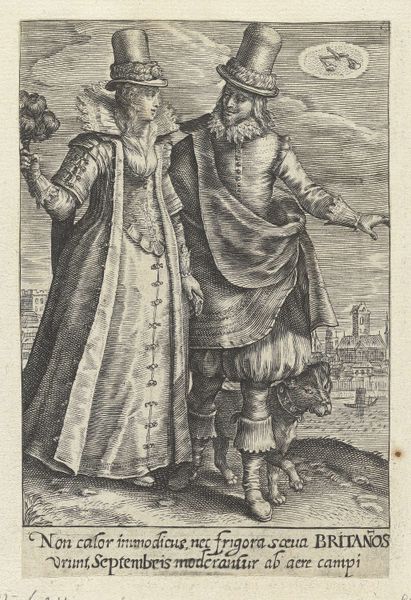
print, engraving
#
portrait
# print
#
figuration
#
romanticism
#
line
#
genre-painting
#
engraving
Dimensions: height 83 mm, width 52 mm
Copyright: Rijks Museum: Open Domain
Curator: Look at the striking composition in this 1789 print by Ernst Ludwig Riepenhausen, titled "Almanakprentje uit 1789: Staande man en vrouw op de rug gezien," which translates to "Almanac Print from 1789: Standing Man and Woman Seen from the Back." Editor: The first thing that strikes me is the intricacy of line, creating a somewhat melancholy and reserved, yet intimate mood, despite only seeing them from the back. There's something subtly romantic in the stark simplicity. Curator: Absolutely. It's essential to consider that as an “Almanac Print,” its role would have been to provide social commentary or visual entertainment in calendars, very different from say, a history painting. The print is fascinating as a quotidian artifact providing glimpses into gender, class, and power at the end of the 18th century. Notice the elaborate fashion depicted—a tall feathered hat and the patterning in the woman’s dress marking status, against a simpler attire of the man, yet he gestures assertively as they appear to argue. Editor: Indeed. I see a tension expressed in the rendering of surfaces; the dress cascades with a delicate ornamentalism whilst the man’s jacket looks heavily textured, almost scale-like, contrasting her smooth outline and ornamentation. What of that emphatic gesture? It pulls the eye forcefully despite the turned backs. Curator: Riepenhausen offers a reflection on gender dynamics and marital tension, viewed against a society undergoing considerable political and social change. While not directly representational of the French Revolution, it certainly echoes anxieties of power. One wonders about the woman's agency—is she listening, acquiescing, or is she defiant underneath that extravagant plumage? Editor: Intriguing observation, especially since we cannot see her expression! Perhaps that open ambiguity is part of the allure. I’m impressed with how the interplay between decorative detail and rather simple linear expression results in emotional intrigue, as if catching a fragment of some long forgotten drama. Curator: Reflecting on this small engraving shows us how potent even ostensibly simple images are—cultural documents. They present complex socio-political contexts worthy of close inspection. Editor: And on a formal level, seeing how line, texture, and implicit narrative converge into something quite emotive and quietly powerful has offered insight.
Comments
No comments
Be the first to comment and join the conversation on the ultimate creative platform.
